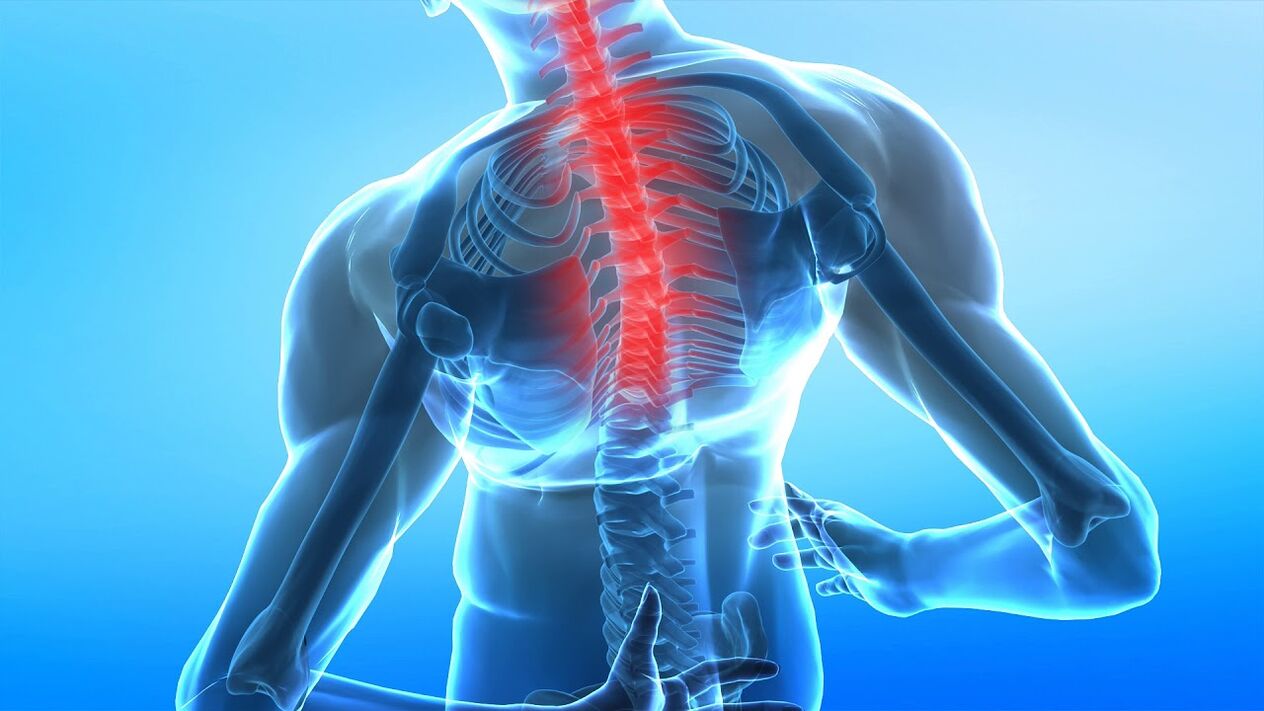Osteochondrosis of the spine is a complex disease that can affect the thoracic, lumbar and cervical spine. Consider the most common symptoms and features of treating the disease at home.

Common symptoms of osteochondrosis of the spine
Osteochondrosis of the spine occurs in 60-70% of people over the age of 40. Lately, it is not uncommon for young people aged 20-30 to suffer from osteochondrosis.
Depending on which part of the spine is affected by the disease, its clinical picture is determined. Defeat of the cervical region is characterized by the appearance of the following symptoms:
- Dizziness that occurs spontaneously and increases with turning the head (especially with sudden movements);
- Headache that is not relieved by painkillers. Pain is often caused by motor activity in the cervical region;
- Pain in the shoulder girdle and upper limb girdle;
- Violation of vision: weakening, flickering before the eyes of "flies" and multicolored circles;
- Hearing impairment: tinnitus;
- Episodes of loss of consciousness;
- Snoring in sleep is the result of constant tension of the muscular apparatus of the neck;
- In more advanced cases, neurological symptoms appear: numbness of the tongue, change of voice, etc.
Thoracic osteochondrosis is characterized by:
- Pain in the chest, shoulders, caused by physical activity, hypothermia. The pain usually occurs at night. Increased pain may be caused by deep breathing;
- Feeling of compression in the chest and the appearance of stabbing pain in the intercostal spaces (especially when changing body position and movement);
- Feeling of "creeping" on the chest and arms, sometimes - on the neck. Numbness and coldness of the extremities.
The basis of clinical symptoms of osteochondrosis, localized in the lumbar region, are symptoms such as:
- Pain syndrome localized in the lumbar region. It can be painful, permanent or periodic in the form of "lumbago" with radiation to the right or left leg, as well as the perineum, sacrum. The pain is significantly intensified by exercise and physical activity;
- Numbness and coldness of the lower extremities, decreased sensitivity in the legs;
- With the defeat of the motor parts of the nerve chain, the development of paresis and paralysis of the legs is possible;
- Organ dysfunction of the genitourinary system.
How to get rid of osteochondrosis at home without medication
Medicines of plant and animal origin are often used to treat osteochondrosis at home without medication. Preference is given to the following:
- bee and snake venom;
- badger fat;
- Fir essential oil;
- Camphor alcohol, etc.
These substances can be used as ointments, coatings, rubbing.
In order to alleviate the symptoms and reduce the progression of the disease, it is recommended to use special orthopedic bedding: mattresses and pillows. In addition, special needle applicators can be used at home to improve blood circulation in tissues and relax muscles.
An important role in the treatment of osteochondrosis is proper nutrition. To improve the condition of cartilage and vertebrae, alcohol, coffee, tea, spicy foods, foods rich in extractives (fatty meat and fish, mushrooms) should be excluded from the diet;
Add to your diet foods and dishes that help restore and maintain the integrity of cartilage tissue: lean meat and fish, dairy products.
At home, you can resort to the help of a professional masseur who will help relieve muscle tension in any part of the spine. With caution, you can perform the massage yourself. Self-massage includes caressing, rubbing, kneading.
How to treat osteochondrosis at home with medication
Drug treatment of any disease, including osteochondrosis, should be prescribed by a qualified professional. Only a doctor can prescribe the correct treatment regimen, taking into account all possible contraindications to taking one or another group of drugs. The following groups of drugs are currently used to treat osteochondrosis:
- Nonsteroidal anti-inflammatory drugs. They can be used in the form of powders, tablets - for systemic use, as well as ointments and gels - for topical use. The former have a more pronounced effect;
- Analgesics (painkillers);
- Muscle relaxants and antispasmodics. Eliminate muscle cramps and pathological muscle tension;
- Preparations that improve blood microcirculation and rheology;
- Chondroprotectors. They provide resistance to cartilage to the action of negative factors;
- Vitamins - mainly group B (B1, B6, B12). They actively affect metabolic processes in the nervous system;
- Antidepressants. Provides prevention of disorders of psychosomatic origin.
How To Cure Osteochondrosis At Home With Exercise
For osteochondrosis of each spine, orthopedists and rehabilitation physicians have developed specialized complexes of therapeutic exercises. For exercise to be helpful, you need to follow a few simple rules:
- Use specially designed complexes;
- Movements should not cause unpleasant and painful sensations;
- Movements should be smooth, accurate, slow;
- Exercise should be done regularly. Even the minimum amount of time spent during the day will bring incredible benefits to the spine.
- Complex exercise therapy should be performed only in periods of remission of the disease.
In addition to the complex of therapeutic exercises, doctors strongly recommend that you always be physically active. Swimming and water aerobics, which are available to every person at any time of the year, perfectly relieve the back muscles.
Attention: any treatment for osteochondrosis must be agreed with the attending physician. Only in this case you can count on the maximum effect of therapy.























